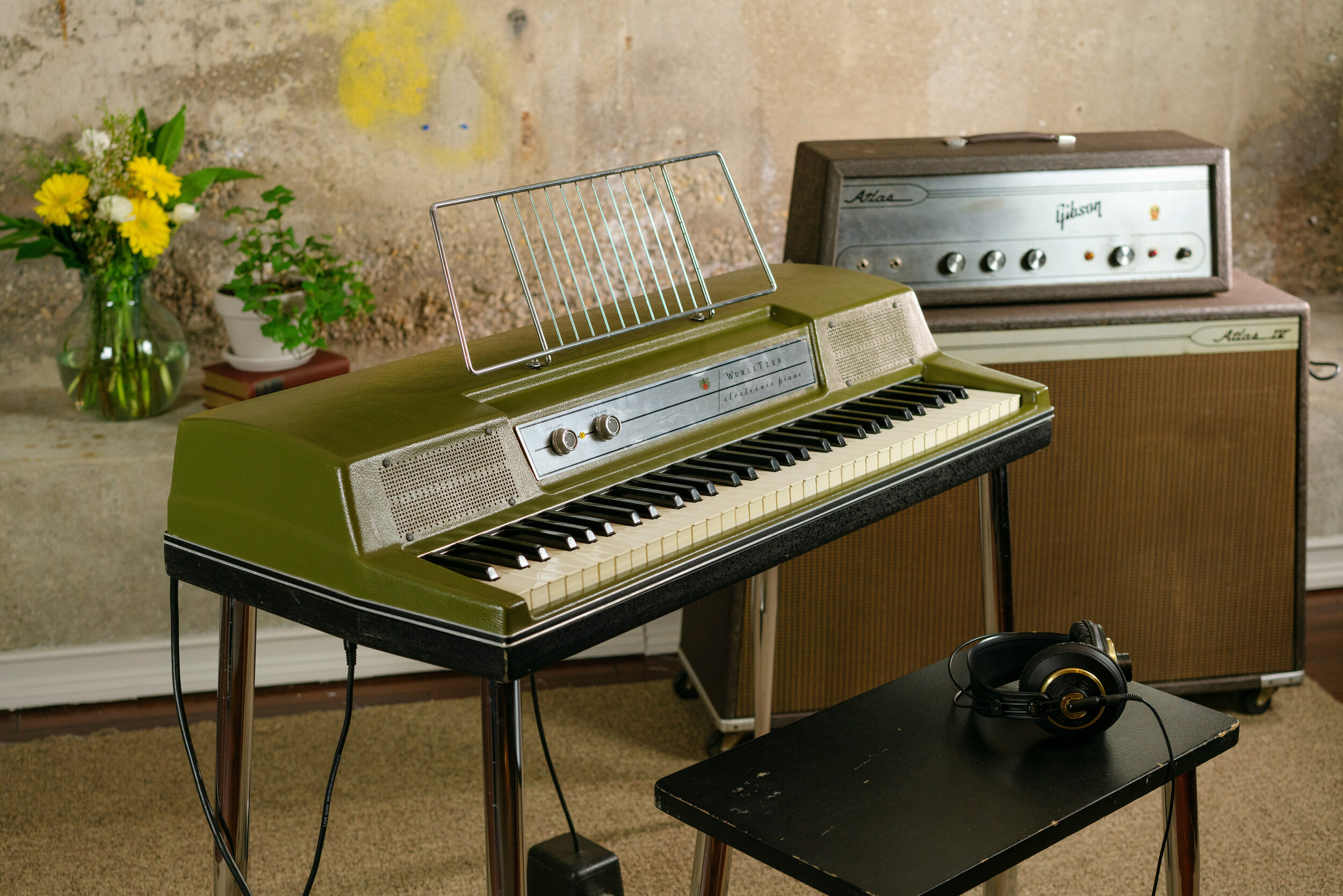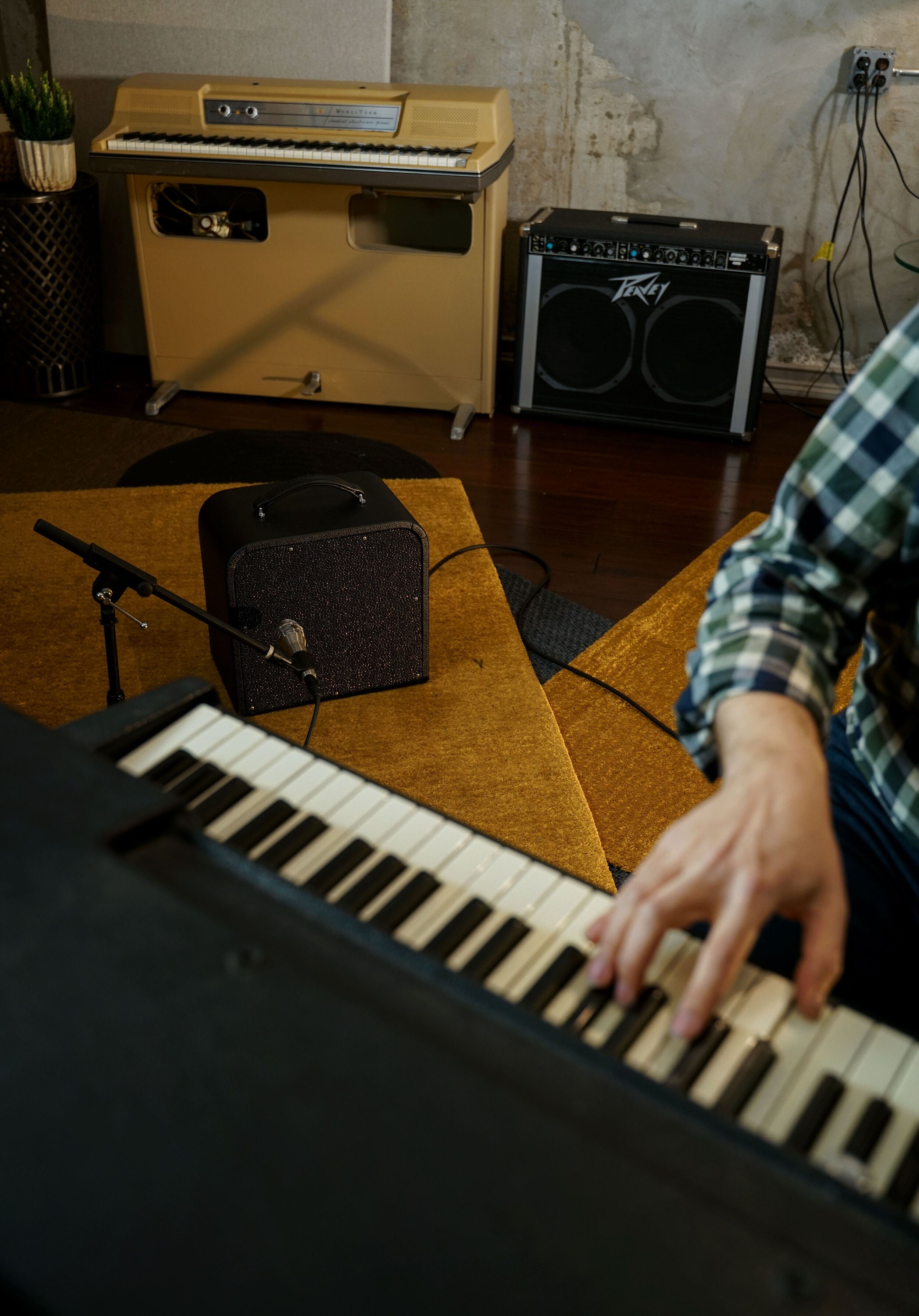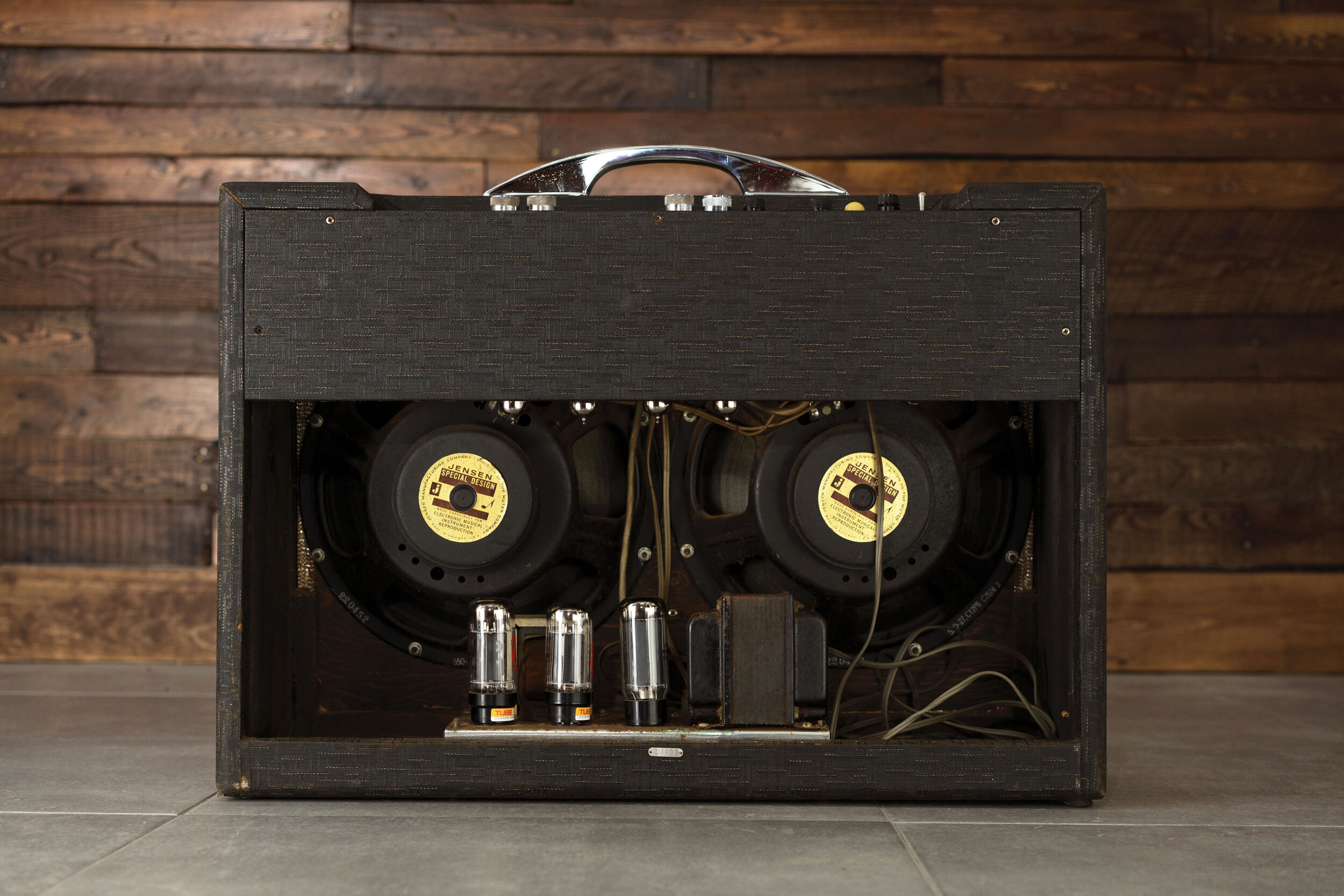What is the difference between a Wurlitzer's headphone output and aux output?
Although both the Wurlitzer’s headphone out and aux out are (obviously) outputs, they tap the signal from very different points in the circuit. In this article, we’ll describe the differences between the two outputs, so that you can choose which one is better for your application.
On the Wurlitzer 120 Service Manual
By the time the 120 was released, the Wurlitzer electronic piano had been available for several years. It is, in the words of the service manual’s Introduction, “lighter weight, smaller, more attractive, and contains a number of other improvements over former models.” We’re not sure if the 120 is in fact “more attractive” (the 112’s cool-toned splatter finish is amazing and we could never pick favorites), but the 120 definitely has a smaller form factor. And although it has a lot of similarities with the 112, it definitely warrants its own service manual.
On the Wurlitzer 112 service manual
We have a lot of affection for this 112 service manual. First of all, the manual’s Introduction conveys a lot of the excitement surrounding the electronic piano, now available in the new-and-improved 112a version. It is an “entirely new concept!” It is “similar in many ways to the conventional piano” and yet “quite different!” It is a “piano with a purpose!!”
Should I use a Dynamic or Condenser Microphone? On the two main types of microphones used in audio recording
If you have read our previous article, Audio Recording at Home for Social Media, you should have a good idea on the basic equipment needed to achieve great-sounding audio recording anywhere. Now you might be ready to dive deeper into some microphone specifics, such as what type of microphone is best for your application. In this article, we will leave out specific microphones (such as ribbon mics) that achieve nuanced colors in your audio and stick to two main categories: dynamic and condenser mics. Understanding the difference between these two types of mics will give you a grasp on how to handle most micing tasks thrown your way.
Essential Accessories for Wurlitzer Electronic Pianos
A Wurlitzer is a self-contained instrument. Thanks to its onboard speakers and onboard amplifier, all you truly need to get started playing a Wurlitzer is the Wurlitzer itself. No external amps or accessories required!
Of course, there are a few pieces of gear that will make your Wurlitzer perform at its fullest potential. Here’s what we recommend:
On the Wurlitzer 700 Service Manual
The Wurlitzer 700 is the console version of the Wurlitzer 120, and its manual is very similar to the 120 manual. The 700 is the same keyboard, except that it is housed in a more traditional cabinet that resembles a spinet piano. The primary differences between the two manuals is that the 700 manual has photos and diagrams of the console.
Refinishing Old Veneer: How we repainted a Wurlitzer 700
Although we love a good original-condition Wurlitzer, we also refinish them occasionally. When refinishing, we try to choose models that are in poor condition and do not have any particular historical significance. (More on our criteria for modding keyboards here.) This keyboard definitely fit the bill.
The Wurlitzer 120 Pilot Light: a Neon Glow Lamp
The pilot light in all Wurlitzer 120 Electronic Pianos is unique. You may notice that when you turn on your 120 the lamp takes a few extra seconds to turn on. Likewise, when turning the amp off the pilot light may take a few seconds to turn off. It kind of does its own thing. That is because the pilot light (or lamp) is a neon glow lamp. Just when you thought the 120 couldn’t get any cooler, it has its very own neon sign to let you know when its on.
Gear Review: Our favorite power strip of all time
If you own vintage gear, you must have a really good outlet to plug it into. There are a lot of options for this, but our favorite is the Furman SS-6B power strip.
Our Furman SS-6B is easily the most essential thing in our studio. Not even exaggerating: it is a pleasure to plug things into this strip. If you have only ever used cheap, flimsy surge strips — or, God forbid, you’ve been plugging all your gear straight into the wall — you are honestly in for a treat when you use this thing. If I could return to any moment in my life, I’d choose the first time I plugged something into my Furman SS-6B, just to relive the surprise and delight of it.
Common Amplifier Malfunctions: The amp smells like it's burning.
There are two major reasons why an amp might smell like it’s burning:
The amplifier is covered in dust, which is in fact burning from the heat of the tubes
The amplifier is malfunctioning and a component is burning
If you have any doubt whether your amplifier is burning, you should turn it off and unplug it right away. However, you may be asking yourself, am I overreacting? Is it correct to be concerned about this burning smell? Or do old amps always smell this way?
On Troubleshooting
Troubleshooting a vintage amplifier involves a skillset that is distinct from designing new circuits. The prime advantage of troubleshooting — the fact that the circuit has already been created for you, in its entirety — is also its biggest challenge.
Why We Love Wurlitzers with Built-In Leg Storage
Early Wurlitzer keyboards — the 112, 120, and 140-series — have built in leg storage. The outer lid (which is hopefully still present all these years!) has a space to firmly screw in the legs, as well as a little strap in the center to hold them in place. This is probably early Wurlitzers’ most underrated feature!
Common Tube Amp Malfunctions: My amp doesn't turn on.
The circuitry that turns the amp on and off is very simple: pretty much just some wiring that provides line voltage to the transformer. More commonly, this wiring is in great shape, voltage passes through it with no problem at all, the amp turns on, all the bad components inside receive all the power that the circuit can offer, and then the amp starts malfunctioning.
How to Tune a Wurlitzer Electronic Piano Reed
A Wurlitzer electronic piano is a unique instrument that uses a piano-like action assembly to strike metal reeds of various pitches to make sound. Like traditional acoustic pianos, a Wurlitzer electronic piano (or EP) has an action assembly with wooden hammers, keys, whips and dampers. However, the tone is generated when the hammer strikes a metal reed, whereas on acoustic piano a string is being struck. One simple principle remains the same though: longer or larger tone generators make lower-pitched notes, and shorter or smaller tone generators make higher-pitched notes.
How to De-Rust Wurlitzer Legs (or Any Oversized Item)
Chrome Wurlitzer 200 and 200a legs are often rusty. Unlike earlier models, the 200 and 200a do not have built-in leg storage. And chrome legs are often not stored as conscientiously as the keyboard itself — or, even if they were originally, they’re prone to rolling away (probably, as luck would have it, into the dampest corner of the room). Anyway, we’re happy anytime the original legs are present, regardless of their condition. (Without the built-in storage method, they are very easy to lose over a span of 35+ years!) And if they are covered in rust — good news! — it is easy to remove.
Why does my Wurlitzer 112 amp have a weird octal plug that goes nowhere?
The Wurlitzer 112 has a mysterious octal plug that appears to go nowhere. It is very similar to the wiring harness plug, except that it doesn’t end in a wire. It’s just a little black dome that occupies chassis real estate and doesn’t appear to do anything in particular.
On Speaker Impedance
All speakers have an impedance, usually 4 Ω, 8 Ω, or 16 Ω. For the best performance, you should match the impedance of your speakers to the output impedance of your amplifier. When the impedances match, the amp achieves the most efficient power transfer between the speaker and the amplifier. Power transfer, expressed in watts, affects the volume, drive, and overall sound quality of the amplifier.
What speaker impedances can I safely connect to my tube Wurlitzer electronic piano?
Every tube amplifier has a preferred speaker impedance: usually, this is something in the neighborhood of 4 Ω or 8 Ω. The preferred speaker impedance of tube Wurlitzers are as follows:
On reading Wurlitzer patents
What is a patent? A patent is a form of compromise. When you patent an invention, you must describe it in detail: specifically, enough detail that someone with a background in your industry would understand how to recreate your invention just by reading the patent application. In return for this valuable information, you are given the exclusive legal right to make and sell your product for a certain number of years. If someone else makes or sells your product during the time period covered by your patent, you have the power to sue them for patent infringement.
How We Digitized the Wurlitzer Service Manuals
We are very excited to announce that our collection of Wurlitzer service manuals are available for download!
The Wurlitzer service manuals are a valuable resource in restoring Wurlitzer keyboards. Although they are not perfect, they contain a lot of interesting, useful, and historically important information. The 112 claims that it is not a guide on servicing pianos in “ten easy steps” (condescending air-quotes theirs!), but it kind of is. You should read the service manual corresponding to your Wurlitzer — and maybe even a few others, since a lot of the information can be applied across models.




















